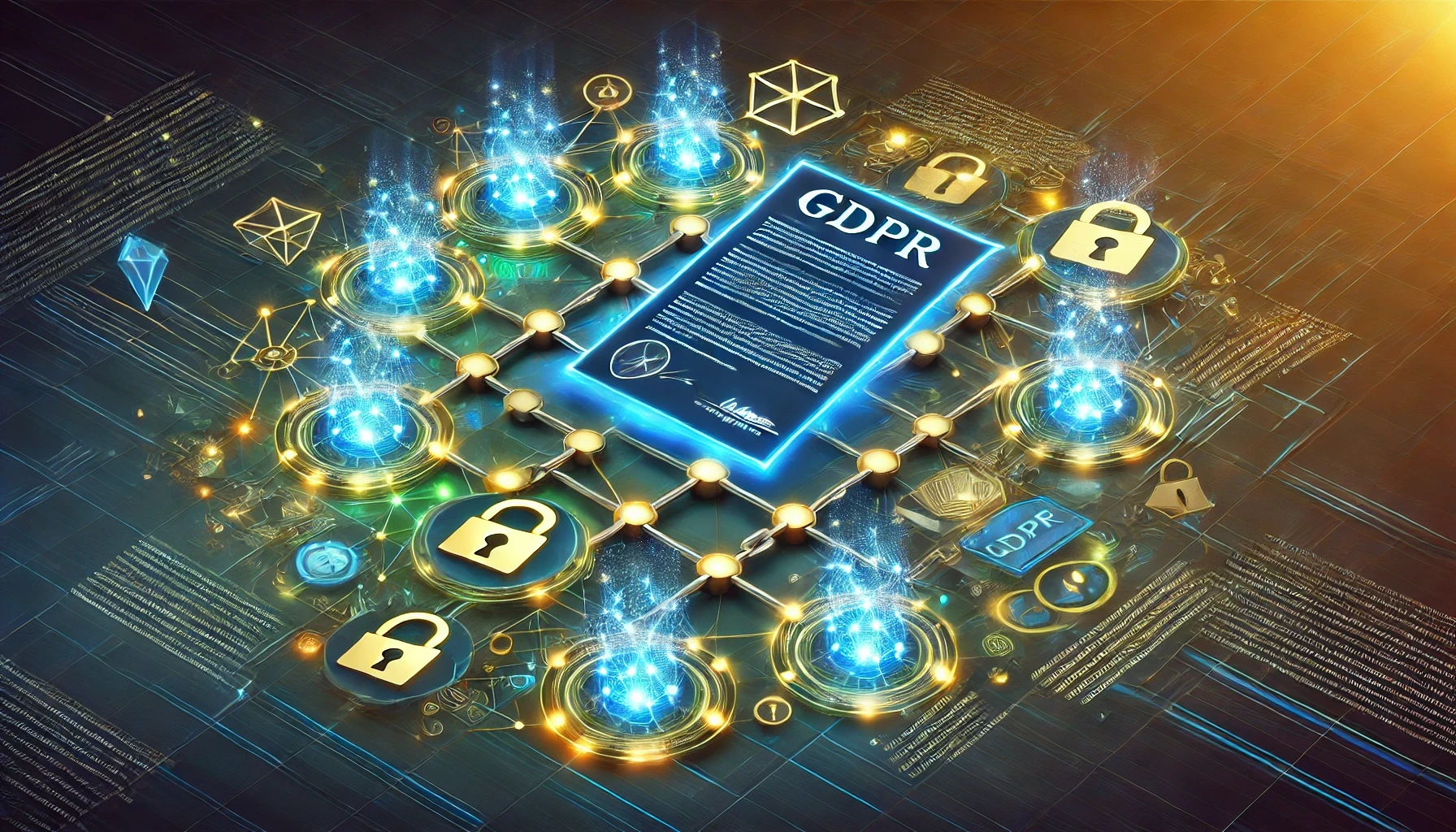1. What Is GDPR?
The General Data Protection Regulation (GDPR) is a comprehensive data protection law enacted by the European Union (EU) in 2018. It governs how organizations collect, store, and process personal data of EU residents, regardless of where the organization is based.
Key Principles of GDPR:
Data Minimization: Collect only necessary data.
Right to Be Forgotten: Individuals can request the deletion of their personal data.
Data Portability: Users can request their data in a portable format.
Accountability: Organizations must demonstrate compliance with GDPR principles.
Fines for Non-Compliance:
Organizations can face penalties of up to €20 million or 4% of annual global turnover, whichever is higher.
2. What Is Blockchain Technology?
Blockchain is a decentralized ledger that records transactions across a distributed network of nodes. Its key features include:
Immutability: Data written to the blockchain cannot be altered or deleted.
Transparency: All participants can view transactions on public blockchains.
Decentralization: No single entity controls the network.
Example Use Cases:
Supply chain tracking.
Cryptocurrency transactions.
Decentralized identity management.
3. Key Conflicts Between GDPR and Blockchain
a. Immutability vs. Right to Be Forgotten
GDPR grants individuals the right to have their personal data erased.
Blockchain’s immutability makes it nearly impossible to delete data once it’s recorded.
Example Conflict:
A user requests to delete their data from a blockchain-based healthcare system, but the system cannot comply due to the nature of the blockchain.
b. Data Controllers and Decentralization
GDPR requires a designated data controller responsible for processing and protecting personal data.
Blockchain networks are decentralized, often lacking a central authority to assume this role.
Example Conflict:
Who is accountable for GDPR compliance in a decentralized network like Bitcoin or Ethereum?
c. Data Localization and Transfers
GDPR regulates cross-border data transfers to ensure data protection.
Blockchain data is often distributed globally, making it difficult to control where personal data is stored.
Example Conflict:
A public blockchain replicates data across nodes in multiple countries, some of which may not meet GDPR standards.
d. Transparency vs. Privacy
Blockchain emphasizes transparency, often exposing transaction details to all network participants.
GDPR prioritizes user privacy, restricting unnecessary data exposure.
Example Conflict:
A user’s public wallet address on a blockchain might indirectly reveal personal information, violating GDPR principles.
4. Potential Solutions for GDPR Compliance in Blockchain
a. Privacy-Preserving Techniques
Zero-Knowledge Proofs (ZKPs): Allow data validation without exposing the data itself.
Encryption: Encrypt sensitive data before writing it to the blockchain.
Example:
A blockchain system encrypts personal data before storage and uses ZKPs for verification, ensuring compliance with GDPR.
b. Off-Chain Storage
Store personal data off-chain and reference it on the blockchain using a unique hash. This keeps the sensitive data outside the blockchain’s immutable ledger.
Example:
A healthcare system stores patient records in an off-chain database and only references them on the blockchain via a secure hash.
c. Hybrid Blockchains
Use a hybrid blockchain model where private blockchains manage sensitive data while public blockchains handle less sensitive transactions.
Example:
A supply chain system uses a private blockchain for company-specific data and a public blockchain for general product tracking.
d. Dynamic Consent Mechanisms
Implement smart contracts to manage user consent dynamically, ensuring that personal data is only used in compliance with GDPR.
Example:
A user can revoke their consent, triggering a smart contract to restrict access to their off-chain data.
e. Data Minimization
Adopt a design philosophy that minimizes the collection and storage of personal data on the blockchain.
Example:
Instead of storing full identities, a blockchain system could store only hashed identifiers.
5. Real-World Examples of GDPR-Compliant Blockchain Projects
a. Alastria Network
A blockchain consortium in Spain focused on GDPR-compliant identity management.
b. Sovrin Network
Uses decentralized identifiers (DIDs) and verifiable credentials to comply with GDPR while providing decentralized identity solutions.
c. uPort
A decentralized identity platform enabling users to manage their data and consent in a GDPR-compliant manner.
6. Challenges in Harmonizing GDPR and Blockchain
a. Lack of Legal Clarity
Many aspects of blockchain technology are not explicitly addressed in GDPR, leading to uncertainty.
b. Balancing Transparency and Privacy
Finding the right balance between blockchain’s openness and GDPR’s strict privacy requirements remains a technical and philosophical challenge.
c. Cross-Jurisdictional Issues
Blockchain networks often operate across multiple countries, complicating compliance with GDPR and other data protection laws.
7. The Future of GDPR and Blockchain
a. Evolving Regulations
Policymakers may need to adapt GDPR or create new frameworks to address blockchain’s unique characteristics.
b. Advances in Technology
Innovations like self-sovereign identities, privacy-focused protocols, and quantum-resistant encryption could help bridge the gap.
c. Industry Collaboration
Cross-industry initiatives can develop best practices for GDPR-compliant blockchain implementations.
Conclusion
The relationship between GDPR and blockchain is complex, with fundamental differences in philosophy and functionality. However, these challenges are not insurmountable. By leveraging privacy-preserving technologies, off-chain solutions, and hybrid models, blockchain projects can achieve GDPR compliance while retaining their core benefits of decentralization and transparency.
As technology and regulations continue to evolve, collaboration between developers, regulators, and businesses will be crucial in shaping a future where GDPR and blockchain coexist harmoniously.
